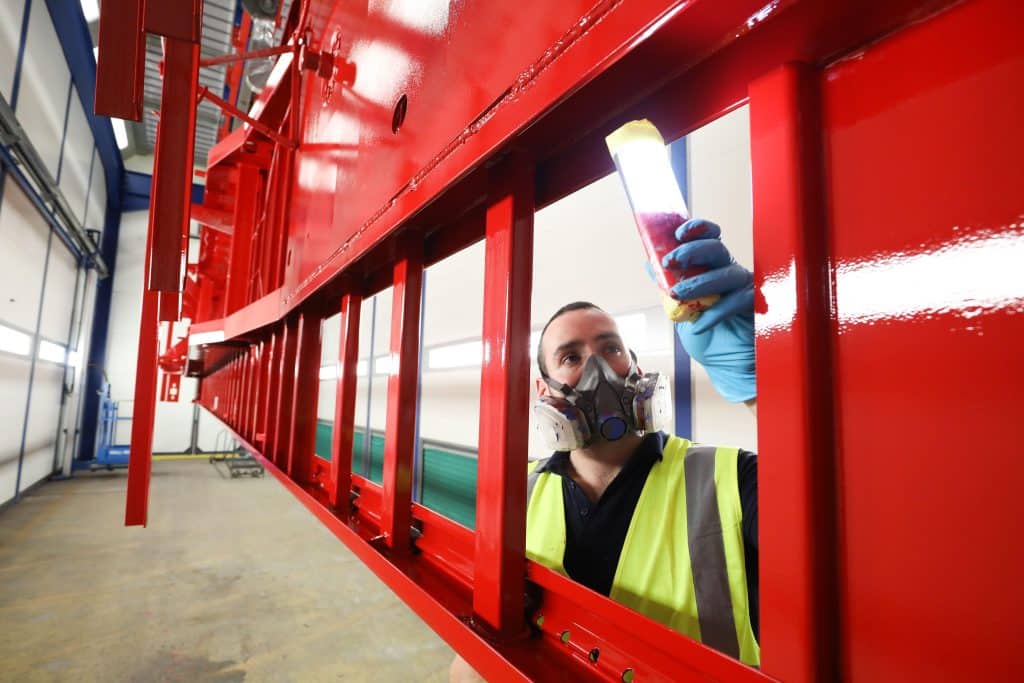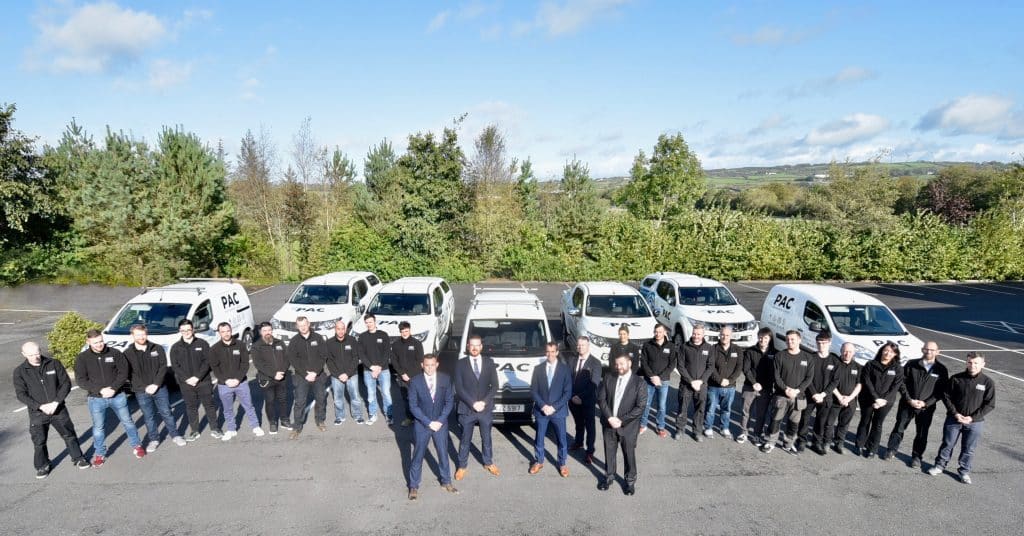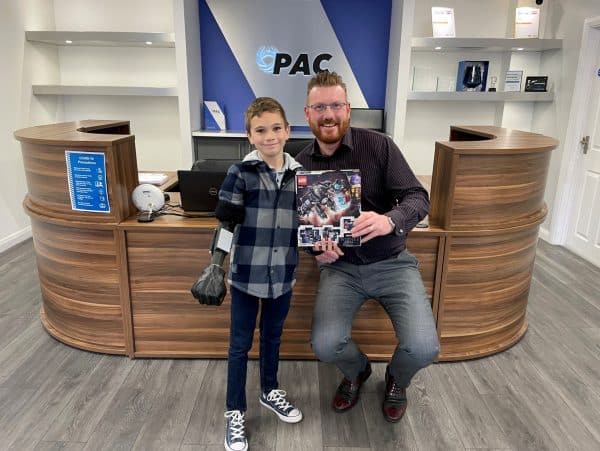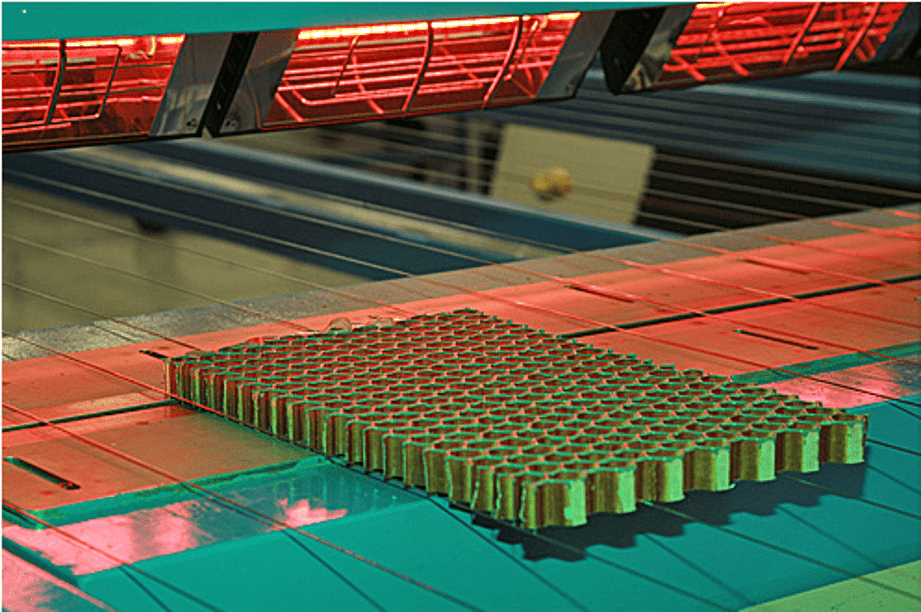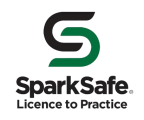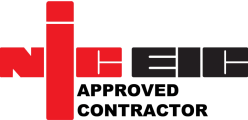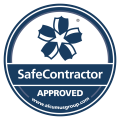Paint Spray Booths and Ovens can be used as part of the manufacturing process for a wide range of industries.
A spray booth is an enclosed or semi-enclosed specialist piece of equipment that is used for many purposes, including the spray painting of fabricated items. They are typically equipped with a source of filtered air and an exhaust system to vent the fumes of the evaporating solvents.
Correctly functioning spray booths ensure processes are completed faster, safer, and cleaner than alternative methods. By restricting the application of hazardous substances to a controlled environment, spray booths can prevent fire and explosion. They also protect Operator health by correctly ventilating the work area, and improve the quality and finish of final pieces.
Spray booths can help to ensure finishing operations are clean and energy efficient, that production standards and levels are met, that over-spray is reduced, and that rework is avoided.
A Brief History of the Spray Booth
- The history of the spray booth dates back to the late 1800s following the invention of the atomiser, which evolved into the first spray gun.
- Joseph Binks, a Maintenance Supervisor, invented a cold-water paint spraying machine to apply whitewash to walls.
- In 1924, Oakland Automobile was the first car to use DuPont’s Duco paint applied with spray guns. Prior to this, all cars were painted by hand with a brush.
- By the 1930s, the earliest prefabricated paint booths were brought to market. Following numerous fires and explosions in the 1940s, companies began to manufacture spray booths out of metal or cement block.
- By the 1950s, Painter health and safety became a priority, which was supported by the invention of downdraft technology to pull paint fumes and vapours away from the Operative.
Selecting a Paint Spray Booth Manufacturer
When investing in equipment such as a paint spray booth, it is important that you have confidence in the expertise, experience, and quality of the company you select to design, build, install, and maintain your system.
There are a wide range of booth designs, configurations, and types available, with an expansive list of additional features and technologies. To find the right solution for your needs, it is recommended that you streamline the design and purchase process by dealing with a professional booth manufacturer.
What Type of Booth is the Most Cost-Effective?
Having a thorough understanding of your own operations and processes is key. A quality spray booth manufacturer can assist you in mapping out your processes and requirements. In addition, you should consider your desired budget and your expected operating costs. Some designs, such as downdraft booths, can be more expensive at build and installation stage due to the civil work required. However, it may be the most cost-effective design for your operations in the longer term.
Different industries have different priorities in relation to production speed and the quality of finished product. For example, commercial and automotive spray booth requirements will be different to those in the aerospace sector. As a result, the design, function, and output requirements for each will differ in-line with industry standards.
Items from small parts through to large trucks can be processed in spray booths, with coatings applied by humans or robots, or a mixture of both. It is important to match the item being sprayed and the application method to the most suitable spray booth design, allowing for future modifications and business growth plans, where possible.
The size and shape of the part being sprayed, how it moves through the booth, and the distance between the spray gun and part are all important in determining the direction and velocity of airflow through the booth. The desired production rate also needs to be taken into consideration, which is the number of parts that can be finished within a set time-frame, typically per hour, shift, or day. The production rate allows for the whole process time, including drying or curing time.
Spray booth airflow direction, filtration, and velocity are crucial in achieving the required quality output. A pressurised downdraft booth produces the highest quality finish, for example for the aerospace sector, while a non-pressurised crossflow booth would produce acceptable quality standards for basic applications.
Safety Requirements and Regulations
Spray booths must be designed and manufactured with applicable health and safety requirements and environmental legislative compliance in mind. The paints, solvents, and other materials used, will determine the air quality control features required, including the filter material.
Free Spray Booth Site Survey
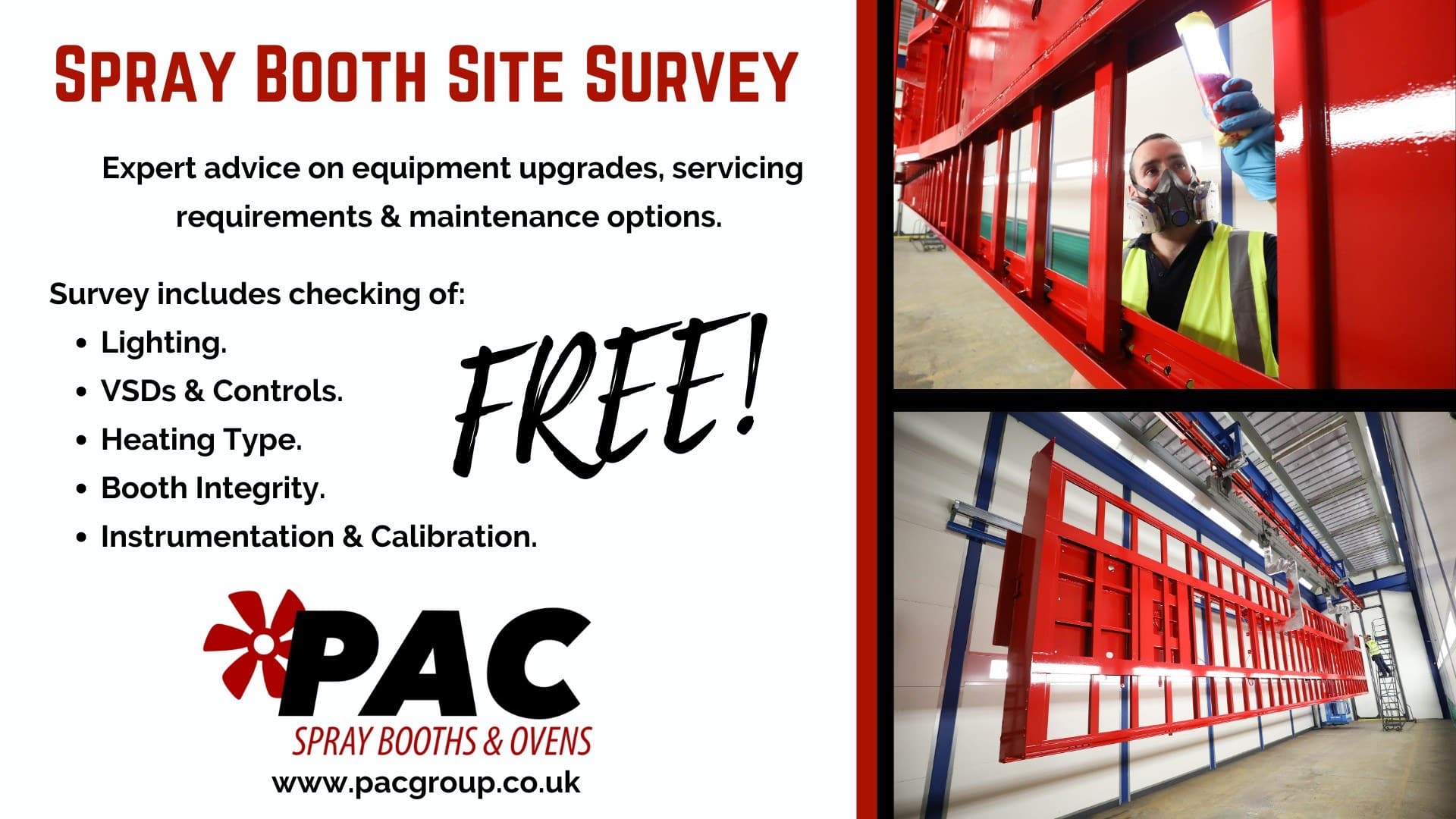
PAC Spray Booths and Ovens carry out a range of Planned Preventive Maintenance (PPM) and reactive maintenance on paint spray booths and process ovens across Northern Ireland, Ireland, and the UK. In addition, we are an experienced designer, manufacturer, and installer of bespoke and custom-built automated and standard spray booth systems for a wide range of industries, including companies in the automotive, aerospace, and commercial sectors.
Our free Site Survey, available to companies across Northern Ireland, provides a summary audit on the effectiveness and efficiency of spray booth operations, with our experts providing advice on potential equipment upgrades, servicing requirements, and maintenance options that businesses can undertake to increase efficiencies, improve output quality, and increase equipment up-time and lifespan.
To find out more, or to book your Spray Booth Site Survey, you can request a call-back from a member of our team.
Alternatively, you can call 02893 364600 or email info@pacgroup.co.uk.
Are you in need of a custom spray booth or oven solution for your business?
Talk to one of our expert engineers today and see how we can help.

